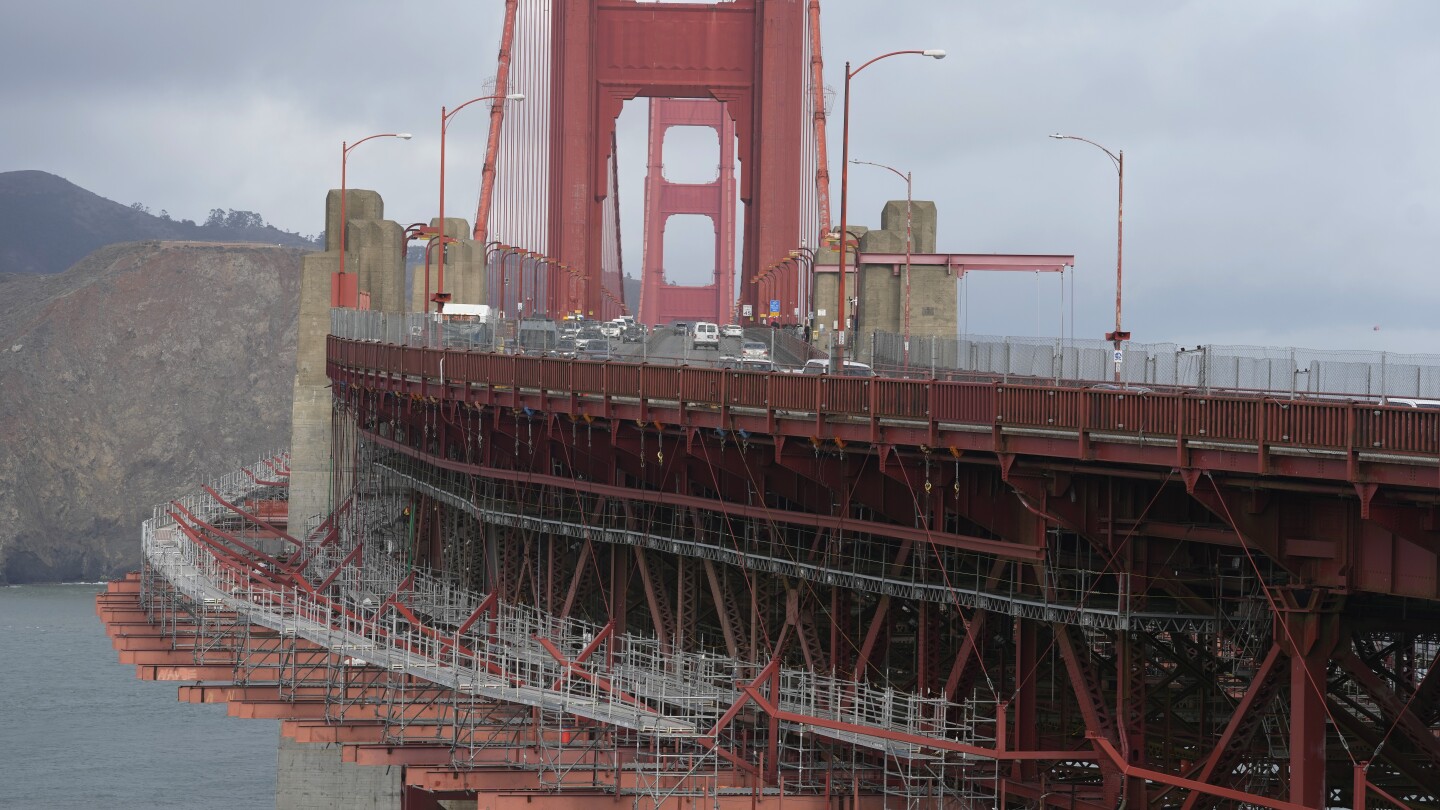Kevin Hines regretted jumping off San Francisco’s Golden Gate Bridge the moment his hands released the rail and he plunged the equivalent of 25 stories into the Pacific Ocean, breaking his back.
Hines miraculously survived his suicide attempt at age 19 in September 2000 as he struggled with bipolar disorder, one of about 40 people who survived after jumping off the bridge.
Hines, his father, and a group of parents who lost their children to suicide at the bridge relentlessly advocated for a solution for two decades, meeting resistance from people who did not want to alter the iconic landmark with its sweeping views of the Pacific Ocean and San Francisco Bay.
On Wednesday, they finally got their wish when officials announced that crews have installed stainless-steel nets on both sides of the 1.7-mile (2.7-kilometer) bridge.
“Had the net been there, I would have been stopped by the police and gotten the help I needed immediately and never broken my back, never shattered three vertebrae, and never been on this path I was on,” said Hines, now a suicide prevention advocate. “I’m so grateful that a small group of like-minded people never gave up on something so important.”
Nearly 2,000 people have plunged to their deaths since the bridge opened in 1937.
City officials approved the project more than a decade ago, and in 2018 work began on the 20-foot-wide (6-meter-wide) stainless steel mesh nets. But the efforts to complete them were repeatedly delayed until now.
The nets — placed 20 feet (6 meters) down from the bridge’s deck — are not visible from cars crossing the bridge. But pedestrians standing by the rails can see them. They were built with marine-grade stainless steel that can withstand the harsh environment that includes salt water, fog and strong winds that often envelop the striking orange structure at the mouth of the San Francisco Bay.



Why don’t you go prove them wrong.
Are you suggesting that they jump off the bridge?
No, I am suggesting they go to San Francisco and protest the suicide nets. Maybe get a grassroots movement, and come to the attention of some group with an opposite viewpoint…
You know something as useless as their comment.
People will just drown instead, the net only stops people from going to that location.
People jump off high locations to avoid drowning…
Well excuse me Mr. I Know Everything, it’s not about ethics or reason. A way to die is a opportunity for the person to do it. Just like they have the choice to jump.
To put it in other words, people are usually looking for an easy way out when they commit suicide, like jumping off a bridge. Or using a gun. Very few suicides with drowning, cause it’s a horrible way to go.
It’s dystopian as hell, but taking away the easy ways to kill oneself does help prevent suicides.
No it doesn’t stop, before such things were invented, people did try to drown. Cartoons jokes about downing characters to escape their bad life was a thing. Jumping off cliffs to the sea was/is a thing.
Stopping people on the easy path to death just leads to alternative forms or a lot more dangerous situations that the person would suffer before they could finally die.
Suicide is often a spur-of-the-moment impulse. Therefore opportunity plays a huge role. Remove the opportunity and a lot of people won’t go through with it. This has been studied extensively.